San Juan College museum unveils latest addition to dinosaur fossil collection
FARMINGTON — How do you like your eggs?
If you’re a dinosaur fossil enthusiast, the answer is, you probably like them unbroken and perfectly preserved — perhaps still nestled in their nest.
That’s the condition of six oviraptor eggs that have been donated to the Sherman Dugan Museum of Geology at the San Juan College School of Energy by Farmington’s Dugan family. The eggs and their nest were unveiled during a public ceremony on Tuesday, Nov. 15 that attracted approximately 350 people to the museum.
The donation was made by Sean Dugan, the president and CEO of the Dugan Production Co., on behalf of his family and his late father Sherman, for whom the museum is named. He purchased the eggs and nest two years ago for approximately $30,000, but the unveiling ceremony had to be delayed until now because of the COVID-19 pandemic.
If the turnout during Tuesday’s ceremony was any indication, it was worth the wait. The museum was swarming with families with young children, who crowded around the glass display case hosting the eggs, nest and a replica fossil of a conchoraptor posed as a mother guarding the eggs.
“From the moment I saw them, I knew they were exactly what the museum needed,” Sean Dugan said, describing his reaction upon seeing the eggs for the first time two years ago.
More:Annual Charity Bowl Sale at San Juan College will benefit Habitat for Humanity
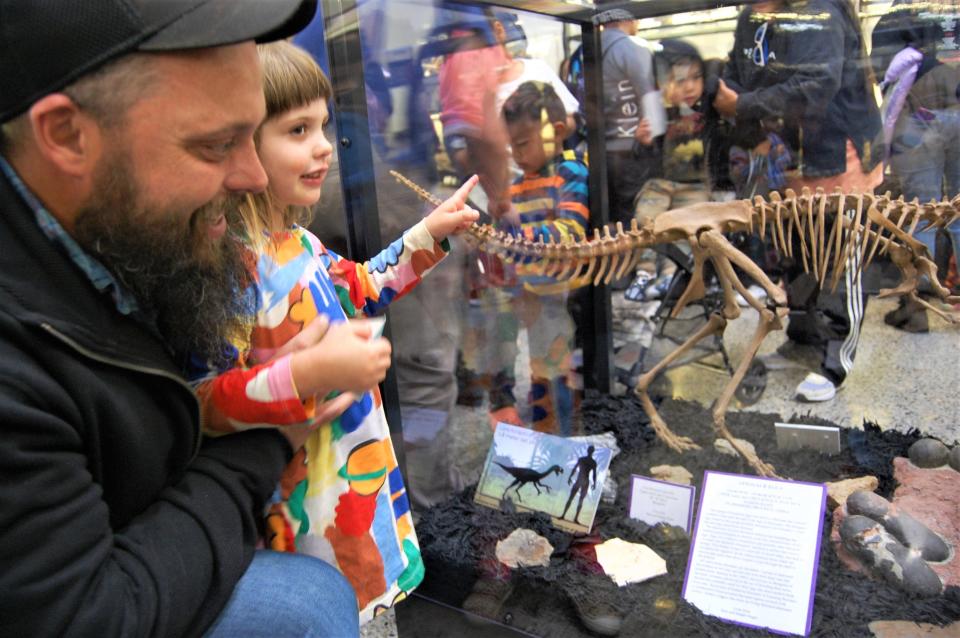
Dugan and his family also financed the museum’s last big acquisition, the collection of dinosaur fossil replicas from which the conchoraptor was sourced. That unveiling ceremony in 2019 drew such an enthusiastic public response that Dugan decided to seek another attention-grabbing specimen for the institution, leading him to attend the 2020 Tucson Gem and Mineral Show, described as the world’s largest, oldest and most prestigious event of its kind.
During that show, Dugan and museum officials established a relationship with a fossil dealer who steered them in the direction of the fossilized oviraptor nest and its six eggs that had been recovered from a site in China. Dugan knew the collection was just what he had in mind, so he made the purchase, arranged to have the eggs brought to Farmington, then watched in dismay as the pandemic broke out, delaying any kind of public ceremony for the for two years.
But on Tuesday night, he was all smiles as he watched children crowd around the display case housing the collection, including his daughter, Ruby.
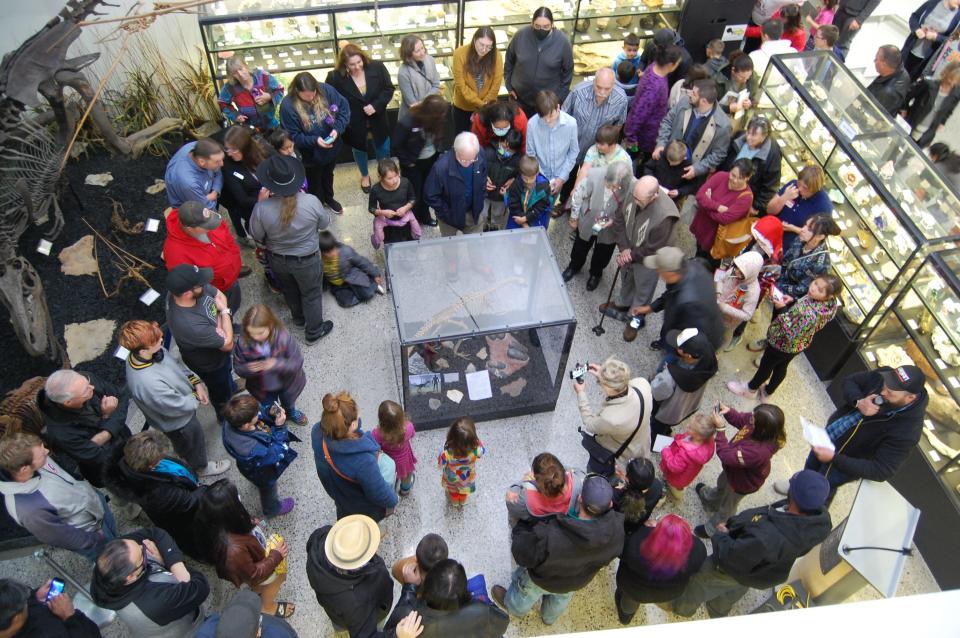
“We put it off and put it off,” Dugan said, recalling how the unveiling ceremony was delayed. “We really wanted to make sure everybody had a chance to see it in a safe manner. It looks like we pulled it off.”
The collection is a significant addition to the museum’s collection, according to cocurators Jeff Self and Donna Ware.
“Oviraptor nests are a very rare thing to see,” Ware said. “Most people who have a nest realize that if they break it up and sell each egg separately, they’re worth a lot more.”
Originally, Dugan had been looking at a four-egg clutch, but when the dealer he was working with mentioned he knew of a larger clutch, Self said Dugan quickly turned his attention to acquiring that collection instead.
“The fact that Sean was willing to spend the extra money to go from a four-egg clutch to a six-egg clutch is phenomenal,” he said.
Oviraptors were a variety of meat-eating dinosaurs that lived in Asia during the Cretaceous Period, which ranged from 100 million years ago to 65 million years ago, Dugan said. He said the species derives its name from the Latin phrase for “egg robber,” since early oviraptor discoveries led researchers to believe the creatures were adept at stealing the eggs of other dinosaurs. However, later discoveries revealed oviraptors to be nest sitters for their own eggs, he said.
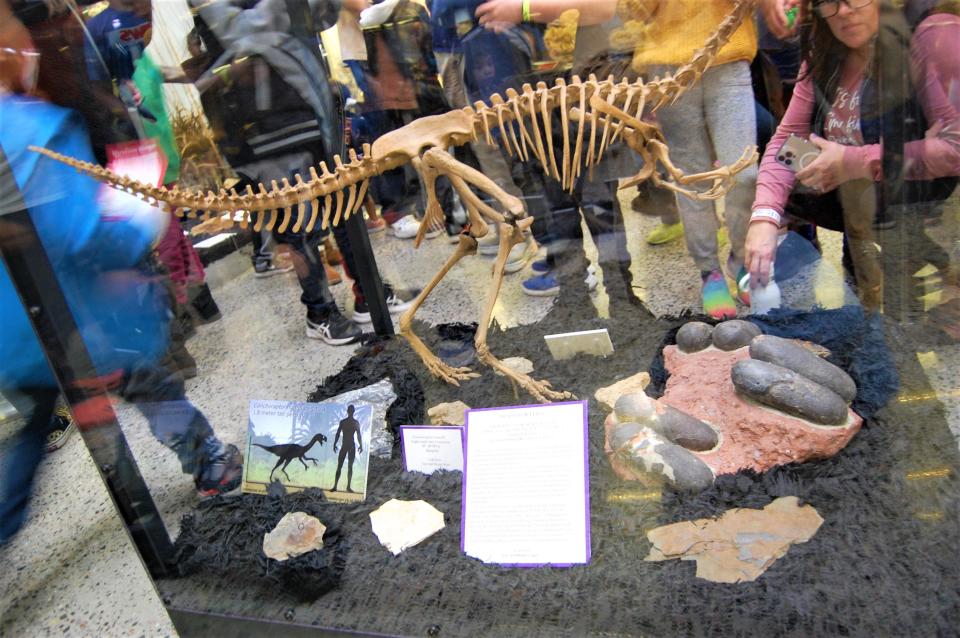
Oviraptors did not exist in what is now the fossil-rich San Juan Basin, Dugan said, but the nest-and eggs-collection was significant enough that Dugan wanted it for the museum anyway. He said the conchoraptor was closely related to the oviraptor, and that is why museum officials decided to pose the conchoraptor replica fossil over the oviraptor nest — to give visitors an idea of the scale and build of an adult oviraptor.
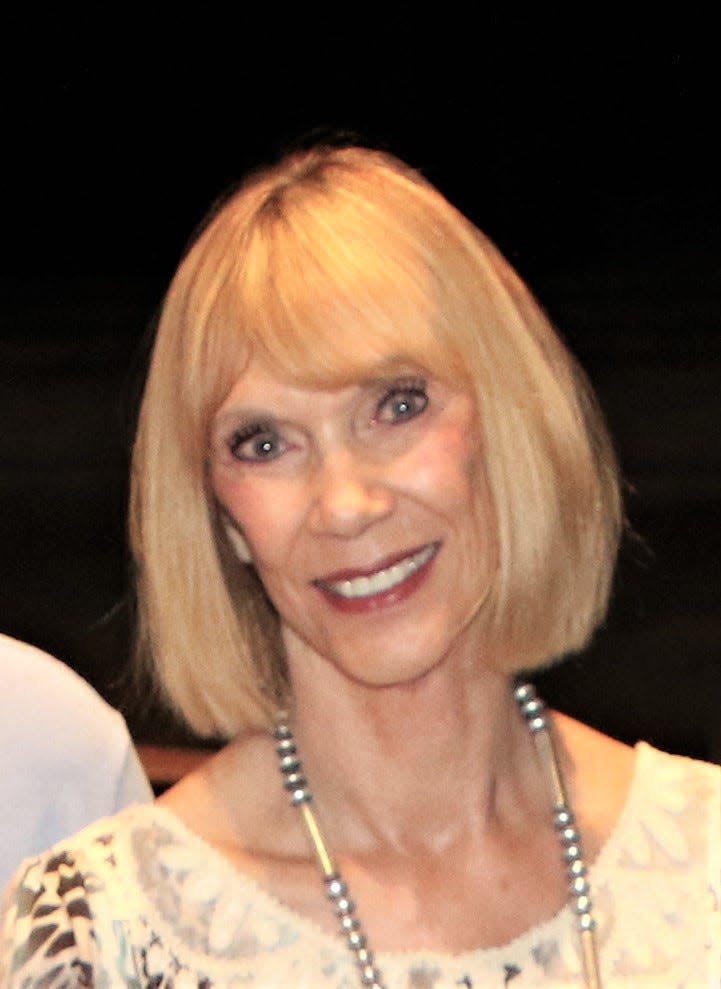
Gayle Dean, the executive director of the San Juan College Foundation, the philanthropic arm of the college, said her institution is very fortunate to have a benefactor like Dugan.
“I think there are very few community colleges in that position, and we realize how lucky we are,” she said.
Dean smiled broadly, recounting her delight at seeing the faces of younger visitors light up when they saw the eggs Tuesday night. She anticipates the display will serve as a very big draw for the museum in the future.
“I would say look at the numbers tonight,” she said. “It surpassed what we were thinking. It shows we’re all ready to get out and grow and have this kind of opportunity. So tonight it shows what kind of growth it’s going to be.”
Dugan emphasized that the collection was obtained ethically, having already been brought to the United States before a ban on such historically significant exports was adopted in China in 1996.
“Making sure we bought this legally and (in compliance with regulations) was a big part of it for us,” he said.
Self said Dugan’s insistence on doing things the right way is notable, given the fact that the price tag for such ethically sourced specimens is considerably higher than those that aren’t.
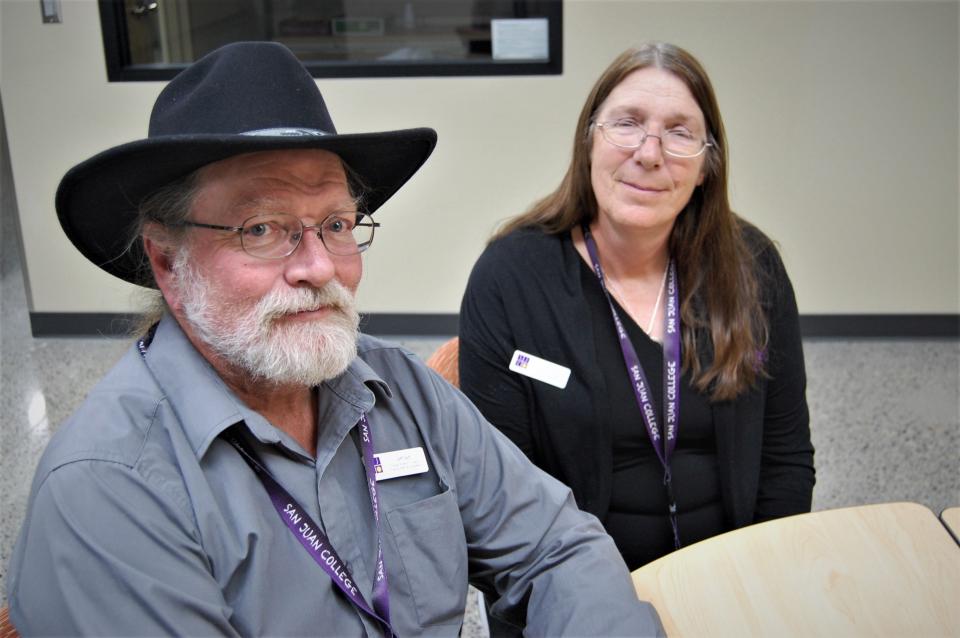
John Burris, a geology professor at the college, described the display as spectacular and noted how rare it is to find a clutch of dinosaur eggs in such good condition.
“You’ve got to keep in mind how delicate eggs are and the circumstances that allow an entire nest to be preserved for 65 million years,” he said.
While he said he didn’t know anything about the setting from which the eggs were recovered, Burris said it was likely that the nest was covered quickly and deeply during a sandstorm. That would have prevented breakage and accounted for their preservation, he said.
“It was just exactly the right conditions for this to have happened,” he said.
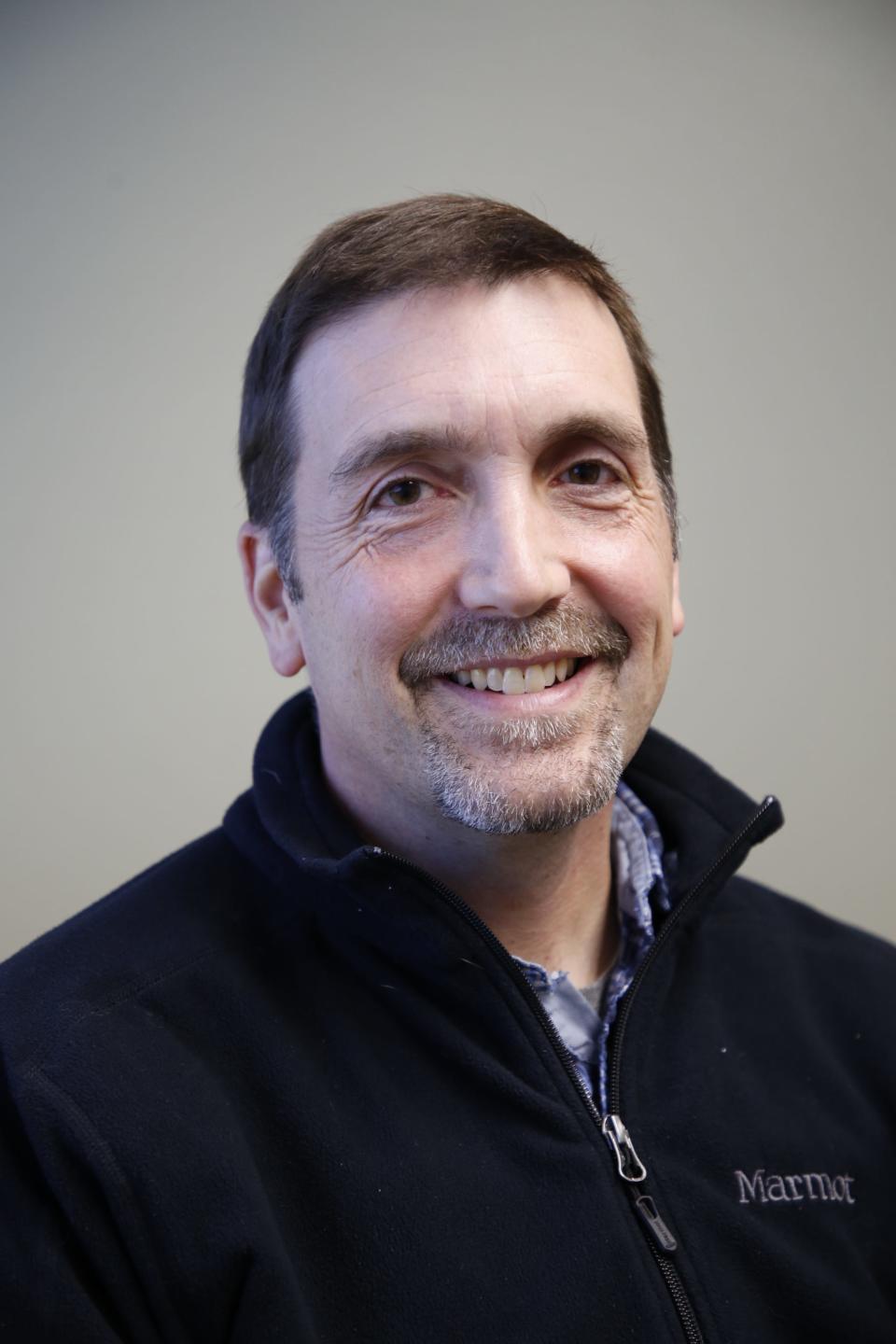
Burris said that while he has found a number of prehistoric fossils in his career, he’s never uncovered anything like this.
“I’ve personally never found a dinosaur egg,” he said. “ … This is not something I’ve ever personally gotten to work with.”
The grin Burris wore on his face Tuesday night belied the fact that the museum’s new display served as a treat even for an academic type who has spent much of his life in the company of such relics. Self said that kind of reaction is typical for almost everyone.
“It’s something in our psyche,” he said, trying to explain the human fascination with dinosaurs. “You can look at this horribly dangerous creature that’s not around to threaten our lives anymore, so it’s safe to worship it from far away.”
Mike Easterling can be reached at 505-564-4610 or measterling@daily-times.com. Support local journalism with a digital subscription: http://bit.ly/2I6TU0e.
This article originally appeared on Farmington Daily Times: College museum unveils latest addition to dinosaur fossil collection
